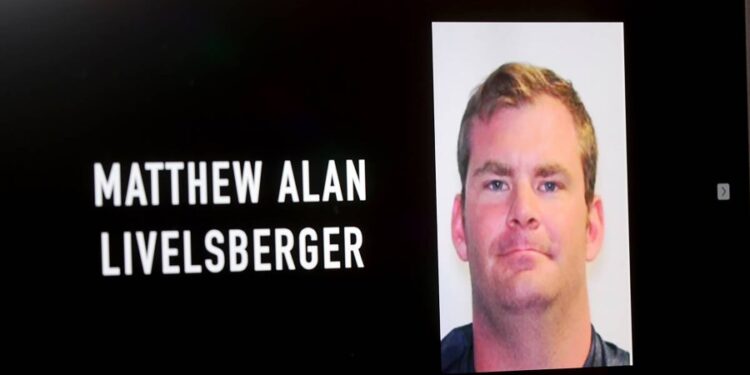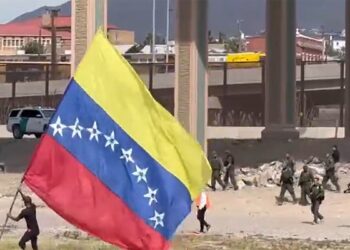(NewsNation) — Within hours of a Tesla Cybertruck exploding in front of the Trump International Hotel in Las Vegas, theories surrounding a former Green Beret’s involvement in the blast began to surface on social media.
Las Vegas-area investigators say Matthew Livelsberger placed firework mortars and camping fuel canisters in the back of the vehicle, which exploded within 17 seconds after he parked the truck, injuring seven people.
The explosion and investigation produced similarities with the deadly attack in New Orleans, which killed 14 people and injured dozens more. At this time, the FBI says no evidence exists to link the two incidents despite Livelsberger and Shamsud-Din Jabbar both renting vehicles from the same company and both serving with the U.S. Army.
But unanswered questions in the Las Vegas case have left some delving into self-investigations about Livelsberger’s motivations.
What conspiracy theorists are saying
The Clark County, Nevada, coroner determined Livelsberger, 37, died from a self-inflicted gunshot wound before the explosion took place. Investigators also said that the explosives found in the back of the Cybertruck, and not the vehicle itself, prompted the explosion.
But investigators admitted Friday that they are still struggling to determine Livelsberger’s motive.
However, people behind X (formerly Twitter) accounts like @EndWokeness pointed to Livelsberger’s military experience as a Green Beret and military bomb expert and wondered online why he would have used “amateur explosives.”
“Did someone put his corpse in the car? Remember, the car is fully self-driving,” one said.

Elon Musk, who posted to his X account several times in the hours after the explosion, responded directly to the theory, debunking the notion that Livelsberger could have been killed elsewhere. Musk wrote that the Cybertruck’s autopilot function would not have worked as it requires a “functioning person” in the driver’s seat.
Other posters on X questioned why, if Livensberger’s body was burned beyond recognition, his passport and military identification card survived the blast. And there are questions about why Livensberger would shoot himself just before he knew the explosion was going to take place.
“The entire narrative makes absolutely ZERO sense to me,” the X poster wrote on their account.
Adam Housley, a former journalist and senior television news correspondent, said that based on Livensberger’s experience as a Green Beret, investigators’ explanation of this week’s explosion, “does not pass the smell test”.
Others questioned in social media posts why a veteran with Special Forces experience would use a bulletproof and fireproof vehicle to carry out such a “mission” and why Livelsberger would reportedly communicate with his ex-girlfriend about the vehicle he had rented.

Some theorists have focused their speculation on politics, including Livelsberger choosing a hotel owned by Trump as the destination for the explosion. His family described him as a “Rambo-type” who loved Trump.
Livelsberger’s uncle, Dean Livelsberger, told The Independent that he believed initially that the Cybertruck’s battery short-circuited. But when he found out what had caused the explosion, Dean Livelsberger said his nephew would have been able to construct a “more sophisticated explosive” than what was used.
He said that Matthew Livelsberger could have created an explosive that would have destroyed half the hotel if he “seriously wanted to hurt others.”
He added: “Think of Oklahoma City. (Timothy) McVeigh was just a normal soldier. Not a Tier 1 operator like Matt.”
Why conspiracy theories exist
Joseph Uscinsky, a University of Miami political science professor who specializes in conspiracy theories, told NewsNation his polling shows that, on average, between 10% and 35% of Americans are conspiracy-minded.
Historically, the only event in which at least 50% of Americans believed a conspiracy was at play was the assassination of President John F. Kennedy in 1963, he says. But when events like this week’s take place and garner high doses of media coverage, people begin to consider different opinions.
“Some humans are inclined toward conspiracy theories. They just see the world through that lens,” Uscinsky said. “So when they see the coverage (of an event) they think, “Ah, this thing happened so it must be a conspiracy where other people will look at it and say. ‘Oh, that was incompetence or accident’ or God did it, or angels or demons. Everyone has their own worldview, and that’s what leads them to reach certain conclusions.”
Conspiracy theories are not limited to large-scale events. For those who constantly look at daily events and conclude that someone or something that they don’t like is conspiring against them, Uscinsky says an event’s notoriety does not matter.
In most cases, conspiracy theories don’t have a great deal of detail or evidence to back them up, Uscinsky said. Current societal norms play a role. Although social media platforms like X and TikTok give voice to certain theories, they don’t add to the population of those who believe, the Miami professor said.
The shelf life of most conspiracies remains short-lived. The notable exception is the Kennedy assassination, which — 51 years after the fact — remains debated, with at least half of Americans believing Lee Harvey Oswald did not act alone.
However, in cases like this week’s Cybertruck explosion in Las Vegas and deadly attack in New Orleans, the tendency is that prevailing conspiracy theorists will move on when something else happens, Uscinsky said.
“Two people exposed to the same exact information will come to very different conclusions about it simply because of who they are,” Uscinsky told NewsNation. “That’s all that’s really going on here.”
For complete coverage of the Las Vegas explosion and Bourbon Street attack, stay tuned to NewsNation.







